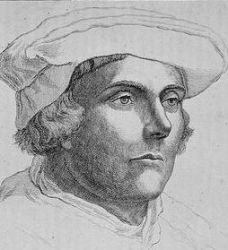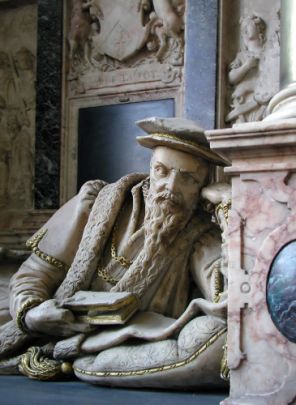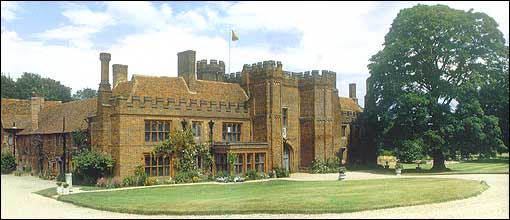INTERESTING FACTS:
- Like many of his contemporaries in the service of the crown, Rich owed his initial advancement to his legal training. He is probably to be identified with one ‘Master Shreche’ who entered the Middle Temple in Feb 1516; by 1529 he was sufficiently advanced to be chosen Autumn reader.
- Two years later he sought to bring himself to the attention of Wolsey by expressing interest in the chancellor's proposed reform of the common law; again he failed to secure an office, although his letter to Wolsey may have influenced his appointment to the Essex and Hertfordshire commissions of the peace in Dec 1528
- Three years later Rich obtained his first important office, that of solicitor-general. In this capacity Rich followed Audley into the House of Lords and on 20 Dec 1534 a warrant was issued to pay him £20 for his attendance there.
- Ten days after the dissolution of Parliament on 14 Apr 1536 he was appointed first chancellor of augmentations, a post for which he was probably in mind when it was created: his occupancy of it was to move the French Ambassador Marillac to call Rich ‘the most wretched creature ... the first inventor of the destruction of the abbeys and monasteries [and] the general confiscation of church property’, a stigma which has continued to tarnish his memory.
- As solicitor-general he had to prosecute those who denied the validity of King Henry VIII's second marriage or the royal supremacy. He prepared the indictment against the Nun of Kent and her associates in 1533, and in the following year he took part in the examination of the priors of Bevell in Nottinghamshire and of the Charterhouse in Axholme, Lincolnshire, who refused to accept the King as Supreme Head. He also helped to examine Bishop John Fisher, but was probably not responsible for the unscrupulous tactics ascribed to him in Hall's ‘Life’ of the Bishop. It was, however, Rich's testimony which was the gravamen of the indictment against Sir Thomas More and his evidence at the trial which was decisive in securing a conviction: in Roper's account
- By contrast, his scarcely less decisive part in the condemnation of retaliated by denouncing Cromwell five years later is seldom held against him. It was a different kind of demonstration of his subservience to the crown that Rich gave in the Parliament of 1536, to which he was probably returned as one of the knights for Essex.
- After the dissolution Rich was paid the customary fee of £100 as Speaker. Rich was returned to the Parliaments of 1539 and 1545 as senior knight for Essex
- By 1540, when the last monastic houses had been dissolved, Rich was presiding over the largest of the revenue courts and was, consequently, an important member of the Privy Council. During his chancellorship of the augmentations Rich was able to build up a considerable estate in Essex, chiefly through purchase; his principal gift, made by the King in 1536, was the small priory at Leighs, which Rich shortly rebuilt, and four other small manors worth £26 a year
- As chancellor Rich had to defend himself against several charges of corruption before the King and Privy Council, and when under Mary the court was merged with the Exchequer further accusations were brought against him of faulty drafting of indentures in exchanges of land and in sales of wood and lead. None of these attacks issued in formal prosecution.
- In his final months at the augmentations Rich assisted in mobilizing financial resources for the forthcoming French campaign and on 1 May 1544 he became treasurer for the French war. However the forecast costs were greatly in excess of the forecasts of the previous spring. The King ‘marvelled’ at several of the discrepancies and it may not have been illness alone which caused Rich's resignation and return in Nov. For the last three years of the reign he held no major appointment but he continued his association with the war effort, serving on special commissions for meeting its costs and for examining the royal revenues.
- As the reign drew to its close Rich became increasingly identified with the conservative faction in the Privy Council.
- In 1546 he was involved in Edmund Bonner's attempt to put down heresy in the diocese of London, especially in Rich's adopted county of Essex, and according to Foxe it was Wriothesley and Rich who racked Anne Askew in order to discover her sympathisers at court. Anne Askew stated that the Chancellor Wriothesley and Rich screwed the rack at her torture with their own hands. Yet he remained on good terms with Edward Seymour, Earl of Hertford, who at one stage recommended him for an appointment at Boulogne. He also connived at the destruction of Thomas Howard, 3rd Duke of Norfolk and his son Henry Howard, Earl of Surrey, being one of the Councillors deputed to examine the Duke.
- Henry VIII appointed him to be an assistant to the execution of his will and bequeathed him £200 for his pains. On the accession of Edward Tudor VI, Rich was created a baron. He supported the assumption of the Protectorship by Hertford, now Duke of Somerset and Protector of the Realm.
- He also take part in confirmed the sentences of deprivation passed against Bonner and Gardiner, and in the harsh treatment accorded to the Princess Mary Tudor. Possibly this harshness was exaggerated, for Mary on her accession showed no ill-will to Rich. He retired from the chancellorship on the ground of ill-health in the close of 1551, at the time of the final breach between Northumberland and Somerset.
- An enemy of religious extremism, he suppressed Protestant conventicles in Essex; in 1551 he was a reluctant witness at the trial of Gardiner. Although he spent considerable time presiding over Chancery in person, he could not avoid the factional strife within the Council. He took the formal lead in prosecuting Admiral Seymour, and in the coup d'etat of Oct 1549 he joined the Councillors against the Protector and used his good relations with the mayor and aldermen of London to win their support: a contemporary witness also judged that Rich's use of letters under the great seal to countermand the Protector's appeals for assistance to sheriffs and justices was decisive in securing the Council's victory.
- There is an improbable story to the effect that Rich warned Somerset of his danger in the Tower and that the letter was delivered by mistake to the Duke of Norfolk, who handed it to Northumberland.
- Rich was one of those who subscribed on 21 Jun 1553 to the device settling the crown on Lady Jane Grey. Three days later he received the honor of Rayleigh, clearly a reward for his acquiescence and an attempt to ensure his support. It failed of its purpose, for on Edward VI's death he quickly declared for Mary. He was confirmed as a Privy Councillor and one of his first tasks was as a commissioner of claims for the Queen's coronation. He appears to have attended Council meetings infrequently during Mary's reign.
- Lord Rich took an active part in the restoration of the old religion in Essex under the new reign, and was one of the most active of persecutors. His reappearances in the privy council were rare during Mary’s reign.
- At the accession of Elizabeth Tudor, Rich accompanied her on her leisurely progress to London. The new Queen did not confirm his appointment as a Privy Councillor but she retained his services and he continued to be styled Councillor until his death.
- Rich died at Rochford on 12 Jun 1567 and was buried at Felstead on 8 Jul. By the terms of his will, dated 12 May 1567 but with two codicils added nearly a month later, he devised most of his estates upon his surviving son Robert. His nine surviving daughters, all married, were to share the movable goods. An illegitimate son Richard Rich had already made his principal benefactions.
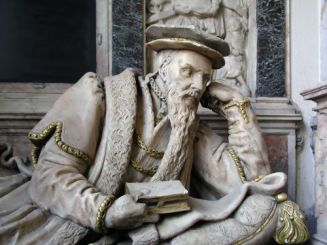
Source: photographer, Mark Ynys-Mon. | 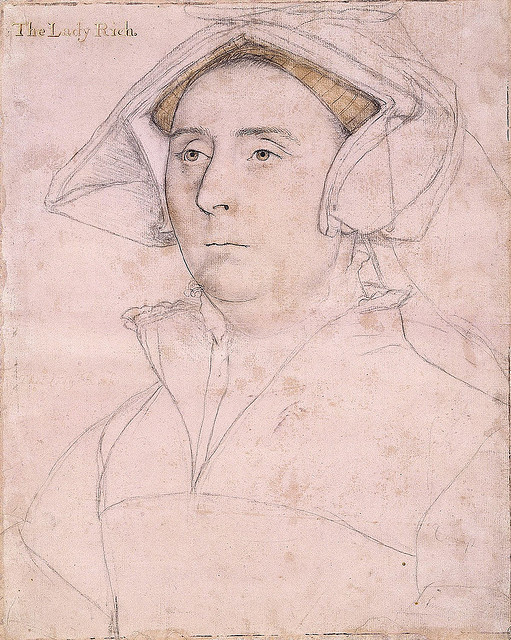 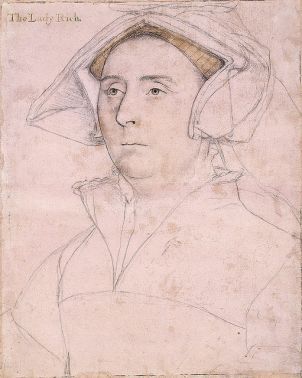
Richard Rich's wife Elizabeth Jenks, Baroness Rich (1510-16 December 1558) was the daughter of William Jenks, a wealthy London spice merchant and grocer, and Elizabeth Adams. Sketch by Hans Holbein in Royal Collection at Windsor Castle. The two were married by May 1536.
(with whom he had 15 children)
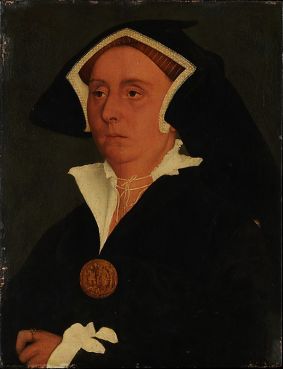
Portrait of Lady Rich
Workshop of Hans Holbein the Younger (English, after 1536)
Recently 10 well known historians named Richard Rich as one of Britain's Top Ten Villains in BBC History magazine.
Here is the full list:
11th century - Eadric Streona.
12th century - Thomas Becket,
13th century - King John,
14th century - Hugh Despenser the younger,
15th century - Thomas Arundel, Archbishop of Canterbury,
16th century - Sir Richard Rich,
17th century - Titus Oates,
18th century - Prince William Augustus, Duke of Cumberland,
19th century - Jack the Ripper,
20th century - Oswald Mosley |
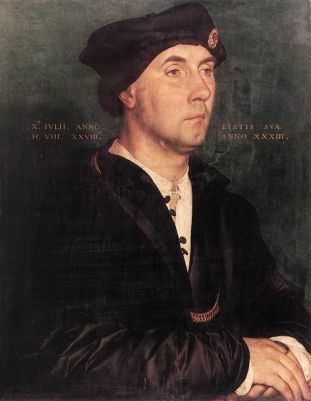
Richard Southwell (1504-1564) was one of Cromwell's most loyal and unscrupulous followers. As might be surmised from the somewhat cold and sinister expression on Southwell's face, he has come down to posterity as one of the most calculating and treacherous members of Henry VIII's court. He became a creature of Thomas Cromwell and was instrumental in aiding Richard Rich in his attempts to force the imprisoned Sir Thomas More to incriminate himself in 1532. Southwell also made accusations against a childhood friend, Henry Howard, Earl of Surrey, that led to the latter's execution. Thomas Cromwell, Earl of Essex employed him as a general factotum during the dissolution of the monasteries between 1536 and 1539. He was knighted (after Cromwell's downfall) in 1542. Southwell later abjured Protestantism, and thus found favour under Mary I (1553-58), but as a result he was shunned in Elizabeth's reign. He died c.1564.
Titles and Offices Held
Knighted: 12 Jun 1536
Created Baron Rich: 16 Feb 1547.
Master of revels, M. Temple: 1516
Butler: 1519-20
Autumn reader: 1529.
J.p. Essex, Herts: 1528-d.,
member, council of 15th Earl of Oxford by 1529
Commr. subsidy, London 1540,
relief, Essex 1550,
goods of churches and fraternities 1553;
other commissions 1529-d.;
clerk of recognizances 22 Mar 1532-7 Dec 1548;
Attorney-General for Wales: 13 May 1532-28
Jun 1558
Dep. chief steward, duchy of Lancaster, south parts, 1532-6
Recorder, Colchester: 30 Sep 1532-44;
solicitor-general. 10 Oct 1533-13 Apr 1536;
chirographer, ct. common pleas 27 Jul 1535-3 Jul 1537;
surveyor of the liveries 20 Apr 1536-14 Mar 1537;
chancellor, ct. augmentations 24 Apr. 1536-24 Apr 1544, jt. (with Sir Edward North)
Chancellor 24 Apr-1 Jul 1544;
Groom, privy chamber in 1539;
PC by Aug 1540-Nov. 1558;
treasurer, French war 1 May-Dec 1544;
bailiff, manor of Northwold May 1546; ld.
chancellor 23 Oct 1547-21 Dec 1551;
trier of petitions in the Lords Parlts. of Oct 1553, Nov 1554, 1559, 1563;
chief steward, honor of Rayleigh 4 Jul 1558.
|
|

